Preparations for mucus in the nasopharynx
Phlegm in the nasopharynx is a viscous secret, which includes tracheobronchial mucus, saliva and nasal secretions. With the development of pathological processes in the respiratory tract, the amount of sputum increases dramatically. The accumulation of fluid causes irritation of receptors in the mucous membranes of the respiratory tract, which causes coughing. How to get rid of mucus in the nasopharynx? Treatment methods are determined by the cause of the development of inflammation in the nasal cavity and laryngopharynx.
Increased mucus formation in the respiratory tract accompanies many respiratory diseases - nasopharyngitis, tracheobronchitis, tonsillitis, laryngotracheitis, etc. Treatment of infectious diseases is accompanied by the use of disinfectant, anti-inflammatory and mucolytic drugs.
Therapy Methods
You can remove mucus from the nasopharynx with the help of sanitizing procedures and decongestants (vasoconstrictors). But before using drugs, it is necessary to accurately determine the cause of inflammation in the ENT organs. If the infection in the respiratory tract is not eliminated, sooner or later it will lead to serious complications.
In addition to the accumulation of mucus in the laryngopharynx, patients may be bothered by additional symptoms:
nasal congestion; lacrimation; sore throat; painful swallowing; elevated temperature; malaise; spasmodic cough.
Only an otolaryngologist can establish the true cause of the onset of the disease after conducting a hardware and visual examination of the patient. After determining the causative agent of the infection, the doctor develops the most appropriate treatment strategy, which is based on:
medications; physiotherapy procedures.
Timely and adequate treatment of respiratory disease allows you to stop inflammation at the very beginning and thereby prevent the spread of infection. To prevent relapses of inflammation, the doctor may advise taking vitamins and immunostimulating drugs.
Medical treatment
How to remove mucus from the nasopharynx? It is possible to facilitate the process of evacuation of sputum from the respiratory tract only if its viscosity decreases. For this purpose, means of secretolytic and secretomotor action are used. You also need to take drugs that help eliminate inflammation in the mucous membranes. This is the only way to reduce the activity of unicellular glands in the bronchi, trachea and nasal cavity, which produce an excessive amount of viscous secretion.
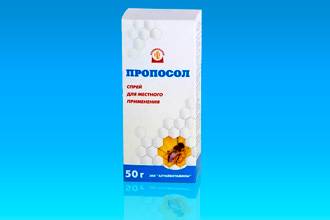
Mucolytics (secretolitics)
Mucolytic drugs reduce the amount of mucin in sputum, which has astringent properties. A decrease in the concentration of protein components in the mucus contributes to its liquefaction and exfoliation from the inner surface of the nasopharynx. With the help of secretolytic agents, not only sputum is removed from the respiratory organs, but also purulent exudate, which is often formed during the development of sinusitis, purulent pharyngitis, tracheobronchitis, etc.
Mucolytic drugs can be used to treat adults and children from 3 years of age.
To convert a dry cough into a wet one, it is recommended to use:
"Fluimucil"; "ACC"; "Ambroxol"; Mukopront.
Coughing up mucus allows you to clear the airways of pathological secretions and prevent the development of inflammation in the lower respiratory tract.
Expectorants (secretory agents)
Expectorant drugs increase the sensitivity of cough receptors, thereby accelerating the process of removing mucus from the nasopharynx. During forced exhalation, a pathological secret, which contains pathogenic viruses or bacteria, is evacuated from the lower and upper parts of the respiratory system. The best preparations of secretory action include:
"Sinupret"; "Ambrosan"; "Tavilek"; Bromhexine.
"Oracept"; "Ingalipt";  "Ambassador"; "Hexoral".
"Ambassador"; "Hexoral".
Physiotherapy treatment
Gargling
As drugs for the rehabilitation of the laryngopharynx, you can use "Furacilin", "Chlorhexidine", "Aqua Maris", "Humer", "Sodium chloride", etc. Equally effective will be a regular saline solution prepared on your own. To make the drug, dissolve 1 tsp. salt in 250 ml of hot water.
nasal lavage
Nasal lavage (washing the nose) is one of the most effective methods for eliminating inflammatory processes in the nasal cavity. Irrigation of the nasopharynx with saline and anti-inflammatory solutions helps to wash out viscous mucus, dust particles and pathogenic flora from the paranasal sinuses and nasal canals. To achieve the desired effect, during washing, the following recommendations must be observed:
type the prepared solution into a rubber syringe; tilt your head over the sink to one side; insert the syringe tip into the upper nostril; slowly inject liquid into the nasal canal; blow mucus out of your nose; Flush the other nostril in the same way.
Conclusion
The accumulation of sputum in the nasopharynx is a clear sign of inflammation of the upper or lower respiratory system. A pathological symptom may accompany the development of tonsillitis, nasopharyngitis, tracheobronchitis, pharyngitis, etc. To facilitate the removal of viscous secretions from the respiratory tract, it is recommended to use mucolytic and expectorant drugs.
It is possible to eliminate the manifestations of the disease only if the foci of inflammation in the throat and nasal cavity are eliminated. For these purposes, it is recommended to irrigate the mucosa with isotonic preparations and antiseptics. It is possible to prevent the re-development of a respiratory disease by taking vitamins and immunomodulatory drugs.
The accumulation of a viscous secret provokes irritation of the receptors of the inner lining of the nose. The localization of sputum in the projection of the respiratory tract creates favorable conditions for the development of pathogenic microflora, which is dangerous for the violation of trophism, inflammation and swelling of soft tissues.
Timely treatment of the nasopharynx clogged with mucus will prevent serious complications, the development of a chronic form of pathology. Therapeutic methods predetermine the etiology of lesions of the nasal cavity and upper pharynx.
Causes of mucus accumulation in the nasopharynx
Increased formation of nasal secretion has a versatile form of occurrence. Medical participation is necessary to differentiate the nature of pathological changes.
Sputum concentration catalysts in the projection of the respiratory system inflammation of the esophageal wall, peptic ulcer of the stomach and duodenum, violation of the integrity of the maxillary, frontal, ethmoid and sphenoid sinuses.
Mucus with an unpleasant odor constantly accumulates in the nasopharynx due to acute respiratory viral infections. The clinical picture is complemented by the following symptoms:
increased body temperature; cough; intoxication; nasal congestion, runny nose; discomfort in the oropharynx.
Increased mucus formation is preceded by the anatomical features of the bone and cartilage structure of the ENT organ: curvature of the nasal septum, wide auricle.
Mucus in the nasopharynx of an adult is formed under the influence of the following factors:
unfavorable working and living conditions; a change in hormonal activity during the period of bearing a child; psychological trauma; emotional overexcitation; the use of non-standard dishes, spices; taking pharmaceuticals; allergic reaction.
Nuance! The production of mucus directly increases against the background of biological aging processes.
Particular attention should be paid to persistent sputum or thick mucus. The transformation of the chemical composition of the nasal secretion contributes excessive use of tobacco products, alcohol, spicy food, bacterial rhinitis.
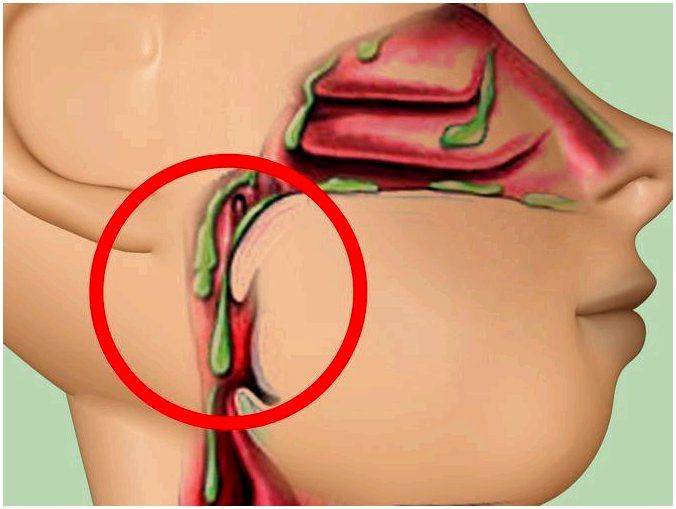
Treatment with expectorants is indicated for the development of acute bronchitis, cystic fibrosis, tracheitis, bronchial asthma, etc.
Secretomotor drugs prevent stagnation of mucus in the lower respiratory tract. If you do not start taking medication on time, this will lead to a violation of the drainage function of the bronchi and, as a result, the development of pneumonia.
Anti-inflammatory drugs
Local anti-inflammatory drugs can accelerate the regression of pathological processes directly in the foci of inflammation. Restoration of secretory activity of goblet cells will lead to a decrease in the amount of sputum in the respiratory tract. To alleviate the course of the disease and speed up the healing process, it is recommended to use the following types of drugs:
"Oracept"; "Ingalipt";  "Ambassador"; "Hexoral".
"Ambassador"; "Hexoral".
The irrational use of drugs in the treatment of children is fraught with side effects - nausea, vomiting, diarrhea, urticaria, etc.
Treatment of children with aerosol preparations can provoke unwanted reactions. To prevent negative consequences, doctors recommend treating a sore throat with Lugol's Solution or antiseptic drugs.
Physiotherapy treatment
You can remove viscous sputum in the nasopharynx with the help of physiotherapy procedures. Regular therapeutic measures contribute to the regression of inflammation in the respiratory tract and the strengthening of local immunity. When carrying out sanitizing procedures, experts advise using non-concentrated saline solutions and antiseptics, as they reduce the viscosity of sputum and disinfect the nasopharyngeal mucosa.
Gargling
Irrigation of the laryngopharynx with anti-inflammatory and antiseptic agents helps to eliminate not only viscous mucus, but also pathogenic flora. To achieve the maximum effect from the procedure, it is recommended to follow the following rules:
prepare a solution for the rehabilitation of the throat immediately before the therapy session; while rinsing, tilt your head back and stick your tongue forward as much as possible; before the procedure, heat the solution to 37-38 ° C; irrigate at least 4-5 times a day.
Important! Try not to swallow antiseptic solutions, as they can affect the intestinal microflora.
Mucus flowing down the nasopharynx irritates the cough center, which is manifested by involuntary forced exhalations through the mouth
The feeling of a regular accumulation of secretory discharge signals a change in the nature of the disease, its migration to the chronic stage.
For the first time after birth, the child has a lot of mucus in the nasopharynx may be due to the adaptation of the inner shell to new environmental conditions. By the end of the third month of life, the baby's condition should return to normal, the natural production of muconasal secretion should be restored.
Narrow nasal passages, viral or bacterial infection can disrupt the production and outflow of secreted fluid in older children.
Where does the mucus in the nasopharynx come from?
The funnel-shaped channel is the connecting link between the nasal cavity and the mouth, from where air is distributed into the respiratory tract. The mucous membrane of the cavity is lined with numerous blood vessels that warm, purify and moisten the gaseous substance.
To maintain the vital activity of the body, the mucociliary apparatus produces about 2000 ml daily. nasal mucus.
Important! When mucus flows along the back wall of the pharynx, there is a possibility of its flowing into the larynx and parts of the respiratory system, which is dangerous for inflammation of the bronchi and trachea.
In a natural physiological process, the nasal secretion flows down the nasopharynx, and is involuntarily swallowed.
During exposure to aggressive endogenous and exogenous factors there is a dysfunction in the production of secretory discharge- the body does not have time to remove an excessive amount of muconasal secretion, which accumulates in the projection of the nasal part of the pharynx.
Excess sputum irritates the cough and vomiting center, which explains the gagging and coughing due to mucus in the nasopharynx.
Conservative treatments for nasopharynx clogged with mucus
Based on the data of visual and hardware examination of the patient, the otolaryngologist draws up a drug regimen, which is based on taking medications, physiotherapy procedures.
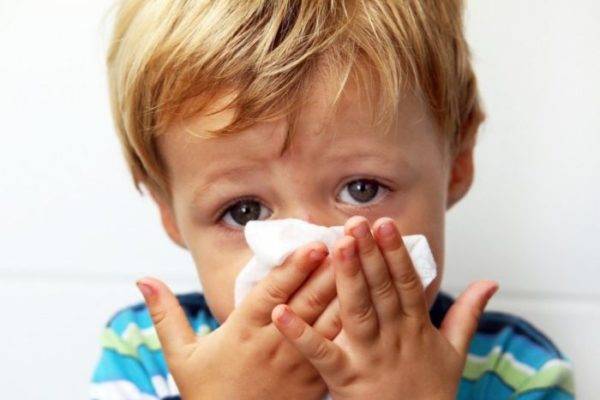
An important condition for the active recovery of a child is proper care, a balanced diet, and the creation of favorable living conditions.
Irrigation of the nasal cavity
Washing the paranasal sinuses with water or anti-inflammatory drugs is prescribed for therapeutic or prophylactic purposes. Irrigation of the canals helps to cleanse the mucosa from pathogenic microflora, accumulations of sputum, dust and foreign agents.
Gargling
Irrigation of the upper pharynx with disinfecting and anti-inflammatory drugs will help to remove mucus from the nasopharynx: Chlorhexidine, Furacilin, Sodium chloride.
The mechanism of action of aqueous solutions is based on the ability of active components to change the properties of the cell membrane, thereby inhibiting the activity of pathogenic microflora. The components violate the integrity of the cytoplasmic membrane, viruses and bacteria lose their osmotic balance, as a result of which they die.
Advice! A portion of the suspension for irrigation of the throat must be prepared immediately before the therapeutic procedure.
For the medicine to flow into hard-to-reach places, while rinsing, take your head as far back as possible, sticking out your tongue. The pediatrician determines the daily frequency of procedures and the course of treatment. On average, the daily rate is limited to 4 - 5 manipulations. The procedure is recommended for children after 4 years.
Medical treatment
To restore nasal drainage, reduce epithelial hyperemia vasoconstrictor drugs are prescribed in a short course: Naphthyzin, Nazivin, Tizin, Xylometazoline, Knoxprey, for children - Nazol Baby, Nazol Kids.
For the evacuation and liquefaction of sputum in the nose, a group of pharmaceutical preparations of secretolytic and secretomotor activity is prescribed. The mechanism of their action is aimed at reducing the vital activity of unicellular glands that produce an excessive amount of pathological secretion.
The therapeutic effect appears relief of inflammation and swelling of soft tissues, changes in the physical and chemical properties of muconasal fluid, improvement of its outflow.
Mucolytics
They are characterized by a complex action: mucoregulatory and liquefying. The active ingredients restore mucociliary clearance, reduce the number of goblet cells to normal, normalize the viscosity and elasticity of the secretory discharge.
Efficiency in otolaryngology was proved by Mukopront, Ambroxol, Mukaltin, Fluimucil. In pediatrics, "Lazolvan", "ACC", "Rinofluimucil" (for nasal use) are widely used.
For reference! The action of secretolytics extends to the acceleration of the regenerative processes of the epithelium.
Expectorants
The sensitivity of the cough center increases "Sinupret", "Bromhexine", "Gedelix", "Prospan", "Pertussin".
During the period of breastfeeding, pregnant women and infants are prescribed herbal products based on ivy ("Gerbion"), plantain ("Eucabal", "Doctor Theiss"), thyme ("Bronchipret").
Active ingredients break down mucoprotein and mucopolysaccharides that form mucus, increase the motor activity of the cilia of the ciliated epithelium.
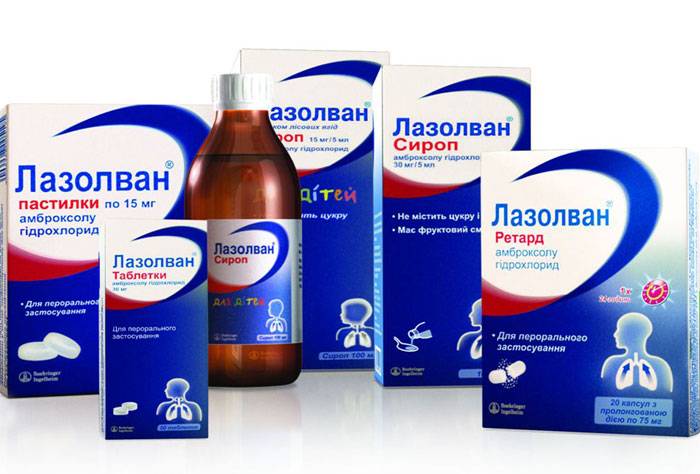
Activates fluid secretion and increases mucociliary clearance, which facilitates the excretion of mucus, reduces cough
Anti-inflammatory drugs
To normalize the secretory activity of the mucociliary apparatus, doctors recommend Hexoral, Proposol, Ingalipt.
Pharmaceutical products have complex action: antiseptic, fungicidal and virostatic. They are active against a wide range of gram-positive and gram-negative bacteria, inhibit the metabolic processes of microorganisms, which contributes to their death.
Side effects are possible with individual intolerance organism in the form of an allergic reaction, a decrease in taste perceptions.
Aerosol preparations in the therapy of children can provoke undesirable consequences. Therefore, it is rational to use Lugol's solution for throat treatment.
Conclusion
How to get rid of mucus in the nasopharynx is determined by the doctor based on the etiology and severity of the lesion. Responding to the first symptoms of pathology allows you to limit yourself to irrigation of the nasal and oral cavities.
The formation of sputum in the projection of the nasopharynx due to infection of the upper respiratory tract or the migration of inflammation to the chronic stage requires conservative therapy: taking antiseptic, anti-inflammatory and mucolytic drugs.
 Diseases of the nasopharynx - one of the most common diseases.
Diseases of the nasopharynx - one of the most common diseases.
The throat burns, itches, a dry, painful cough appears, the nose is blocked, mucus accumulates.
How to cure this trouble? Is the treatment of the nasopharynx at home effective?
What diseases of the nasopharynx disturb most often?
More about the nasopharynx
The pharynx is divided into several parts:
Nasopharynx. This is the upper part of the throat, located next to the first and second cervical vertebrae. The mucous membrane is covered with ciliated epithelial tissue, which ensures the removal of pathogenic particles from the nasopharynx. Without structural features of the nasopharynx, a person could not live even a few days: pathogenic particles would easily penetrate into his lungs. Oropharynx- the middle section of the throat, located below the nasopharynx. Includes soft palate, base of tongue, tonsils, posterior pharyngeal wall. It ends with the upper epiglottis. Laryngeal part (lower section) begins at the level of the epiglottis, ends at the entrance to the esophagus.
The structure of the pharyngeal mucosa includes a huge number of nerves. Minor inflammation in the throat causes discomfort in the throat, drying out, perspiration, sensation of a foreign body in the throat.
Nasopharyngeal diseases have similar symptoms:
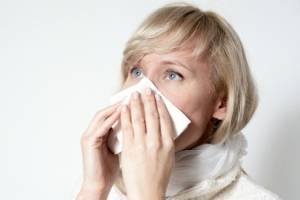 a person may temporarily lose his voice; dryness in the nasopharynx and larynx; hoarseness; partial loss of smell; weakness; itching in the nasopharynx; frequent sneezing; nasal discharge; viscous secret; burning sensation; sore throat when swallowing; feeling as if something is blocking the nasopharynx; secretion of sputum.
a person may temporarily lose his voice; dryness in the nasopharynx and larynx; hoarseness; partial loss of smell; weakness; itching in the nasopharynx; frequent sneezing; nasal discharge; viscous secret; burning sensation; sore throat when swallowing; feeling as if something is blocking the nasopharynx; secretion of sputum.
If you have similar symptoms, you should consult a doctor. Due to the lack of adequate treatment, the course of the disease can become chronic.
The intensity of symptoms depends on the form and stage of the disease. Specific symptoms:
with acute rhinitis, it is necessary to be treated for 12 days, after discharge from the nose they will disappear; for catarrhal rhinitis, weak manifestations are characteristic, but the general condition of the patient will be poor; polyps impair sleep, if present, ears are laid; with a disease of the lake, discharge from the nose has a greenish tint with a rotten smell; sinusitis provokes a prolonged runny nose, sputum discharge will be difficult; Frontitis affects only one part of the nasopharynx, but is manifested by migraine attacks and pain in the sinuses; with scleroma, infiltrates appear, which look like flat or tuberous elevations.
 The diseases of the nasopharynx also include the following diseases:
The diseases of the nasopharynx also include the following diseases:
laryngitis; pharyngitis; tonsillitis; retropharyngeal abscess; parapharyngeal abscess; adenoid hypertrophy; paratonsillitis; injuries and wounds of the pharynx.
The following factors influence the formation of the disease:
The systematic use of cold food and drinks. Hypothermia. Overexertion of the vocal cords. Viruses, fungi, pathogenic microorganisms. Throat injuries. Angina. Diseases of the thyroid gland.
A fairly common disease is rhinopharyngitis, inflammation of the nasopharynx.
Consider the symptoms and treatment of inflammation of the nasopharynx. This is a viral infection that affects the mucous membranes of the nose and throat. It includes signs of pharyngitis (acute pain and burning of the throat when swallowing) and rhinitis (nasal congestion, runny nose, headache).
 The nose is washed with saline, vasoconstrictor drops and sprays are dripped. Puffiness of the pharynx is removed with a solution of Lugol, Yoks.
The nose is washed with saline, vasoconstrictor drops and sprays are dripped. Puffiness of the pharynx is removed with a solution of Lugol, Yoks.
Such a seemingly harmless symptom as drying out of the nasopharynx can lead to various complications: at first it becomes difficult to breathe, then stuffy nose, the sense of smell is lost, children begin to cough, snoring at night, frequent headache, dry crust in the nose, cracks on the mucosa.
The protective properties of the nose are weakened, which causes frequent infectious or viral diseases.
What are the causes and treatment of dry nose? The reasons:
reaction to long-term use of nasal drops; dry indoor air; constant breathing through the mouth due to nasal congestion; congenital curvature of the nose; mechanical damage; strain on the vocal cords.
How to moisturize the nasopharynx? They treat dryness in the nasopharynx with vasoconstrictors, moisturize with light saline solutions or special preparations (Aquamaris, Aqualor). The problem of dry air is solved with the help of humidifiers.
If the nasopharynx hurts, how to treat it?
Treatment
 Usually, diseases of the nasopharynx are treated with conservative methods. Therapy depends on the manifestation of the disease:
Usually, diseases of the nasopharynx are treated with conservative methods. Therapy depends on the manifestation of the disease:
Increased body temperature is removed with antipyretic drugs, bed rest is necessary. To get rid of a cough, the doctor prescribes mucolytics that help speed up recovery. If sputum is secreted, vasoconstrictor drugs are taken.
In case of ozena disease, surgical treatment may be required to remove pathogenic crusts, purulent accumulations, and eliminate dryness of the nasopharynx.
With sinusitis, the following drugs are taken:
vasoconstrictors to reduce swelling (Naphthyzin, Galazolin); antibiotics (Amoxicillin, Amoxiclav); moisturizing drops (Rinolux, Aqualor); aerosol inhalation.
How to get rid of various manifestations of diseases of the nasopharynx?
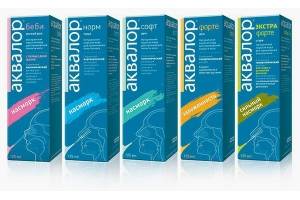 To cleanse the nasopharynx of mucus, rinse the nose and gargle.
To cleanse the nasopharynx of mucus, rinse the nose and gargle.
How to remove mucus? First, make a steam bath for the face. It thins the mucus and promotes its rapid discharge.
For the bath, a hot decoction of potatoes and herbs of sage, mint, ground dill or nettle is used. These ingredients are poured with boiling water, the steam is slowly inhaled through the nose and mouth alternately for several minutes.
Rinse the nose with a saline solution or Aqualor preparation containing isotonic natural sea water.
How to remove snot with this remedy? Aqualor is able to wash all parts of the nasal cavity, cleanse them of bacteria, viruses, crusts, mucus, impurities, moisturizes, improves local immunity, accelerates the regeneration of the nasal mucosa, increases the therapeutic efficacy of drugs that are applied to the nasal mucosa.
It rinses the nose well for both an adult and a small child. Apply for each nasal passage 4 times a day.
How to rinse? Bend over the bathtub or sink, insert the dispenser into the nostril that breathes better, gradually begin to pour the solution into it, turning your head slightly to one side. After washing, blow your nose thoroughly and rinse the other nostril.
How to wash the nose of a child up to a year? The child is laid on its side. A small jet is injected through a syringe without a needle 2.5 ml of saline into one nasal passage. Turn the baby's head to the other side, wash the second nasal passage.

The child's head should not be tilted back.. If he chokes, he is laid on his stomach and lightly tapped between the shoulder blades.
Do not inject the solution quickly and under high pressure. The fluid will enter the Eustachian tube, provoke the development of otitis media. The syringe can be replaced with a pipette.
A pear-aspirator removes mucus. Cotton flagella dipped in oil clean the child's nose from crusts. After cleansing, the medicine prescribed by the pediatrician is instilled (Nazivin 0.01% or Nazol baby). Drops are used no more than once every six hours.
How to liquefy snot? Antihistamines or special cold medicines will help reduce discharge.
It is often necessary to ventilate the premises or do wet cleaning. Humid air thins the snot well. The patient should blow his nose more often.
How to remove swelling? More often there is an infectious swelling of the nasopharynx - nasopharyngitis. The causative agents of the disease are viruses and bacteria. Weakened immunity is not able to cope with pathogenic microorganisms. Often turns into sinusitis.
 Symptoms:
Symptoms:
sore throat, dryness appears; watery discharge in the nose; the face swells, the ears are blocked; headache; often only one side of the face hurts.
Treat the disease with vasoconstrictor drugs, such as xylometazoline. A light massage of the bridge of the nose will help. She is also smeared with a warming ointment (for example, Asterisk).
The throat is rinsed with decoctions of herbs, the nose is washed with Aqualor or saline solution.
In acute sinusitis with fever, severe sore throat, antiviral drugs (Oseltamivir) and antibiotics (Amoxicillin) are prescribed.
With purulent sinusitis, a puncture is made: the area above the nasolabial triangle is pierced under the lower nasal concha, the sinus cavities are washed with antiseptics.
With allergic edema of the nasopharynx, Suprastin, Loratadin are prescribed.
How to restore the mucous? The following drugs will help cure the disease:
 Pinosol. This medicine is completely natural. The composition contains natural oils of pine, eucalyptus, peppermint. Heals the nose, has a beneficial effect. Delufren. This homeopathic preparation has a local anti-inflammatory and regenerating effect. Aquamaris or Aqualor- Purified sea water. They fight inflammation, normalize the production of mucus and restore the mucosa. Derinat. It is an immunomodulator that increases the body's defenses, restores the condition of tissues, and activates the regeneration of the mucosa. Protargol- an effective solution of colloidal silver with powerful antiseptic properties. Released on order. Expiration date - 2 weeks. Use after doctor's permission.
Pinosol. This medicine is completely natural. The composition contains natural oils of pine, eucalyptus, peppermint. Heals the nose, has a beneficial effect. Delufren. This homeopathic preparation has a local anti-inflammatory and regenerating effect. Aquamaris or Aqualor- Purified sea water. They fight inflammation, normalize the production of mucus and restore the mucosa. Derinat. It is an immunomodulator that increases the body's defenses, restores the condition of tissues, and activates the regeneration of the mucosa. Protargol- an effective solution of colloidal silver with powerful antiseptic properties. Released on order. Expiration date - 2 weeks. Use after doctor's permission.
Throat rinses
How to get rid of phlegm? There are many remedies that free the throat from mucus. Rinse is delivered to the infectious focus, destroys microorganisms, reduces the activity of inflammation, stimulates the regeneration of the mucosa.
Pus, microbes, products of their vital activity are removed. The rinse solution should be warm. Gargle up to 6 times a day for several minutes.
Rinse aids:
 mixed a teaspoon of baking soda, table salt and 3 drops of an alcohol solution of iodine to a glass of water. Salt will draw out pus from the tonsils, make it looser, iodine will destroy microbes. Hydrogen peroxide upon contact with affected tissues, it can release oxygen, a powerful oxidizing agent that destroys microorganisms. The drug disinfects the surface of the focus of inflammation, the foam will remove impurities, reduce the impact of microbes on the body. 2 tablespoons are added to 200 ml of water. Tantum Verde contains benzydamine, which has an anti-inflammatory and analgesic effect. Taken inside. Reduces inflammation, improves the patient's condition. Take a tablespoon every three hours. Furacilin- local antiseptic, effective against streptococcal infection. One tablet is dissolved in a glass of hot water. Gargle when the solution has cooled to room temperature. Elekasol- herbal collection, which contains calendula, chamomile, sage, eucalyptus. It has an antimicrobial and anti-inflammatory effect, can reduce sore throat and restore tissues. Chlorhexidine do not dilute before rinsing. But it is better for children to gargle by mixing the remedy with water (1: 2). Immunomodulators will also help Imudon, Lizobakt.
mixed a teaspoon of baking soda, table salt and 3 drops of an alcohol solution of iodine to a glass of water. Salt will draw out pus from the tonsils, make it looser, iodine will destroy microbes. Hydrogen peroxide upon contact with affected tissues, it can release oxygen, a powerful oxidizing agent that destroys microorganisms. The drug disinfects the surface of the focus of inflammation, the foam will remove impurities, reduce the impact of microbes on the body. 2 tablespoons are added to 200 ml of water. Tantum Verde contains benzydamine, which has an anti-inflammatory and analgesic effect. Taken inside. Reduces inflammation, improves the patient's condition. Take a tablespoon every three hours. Furacilin- local antiseptic, effective against streptococcal infection. One tablet is dissolved in a glass of hot water. Gargle when the solution has cooled to room temperature. Elekasol- herbal collection, which contains calendula, chamomile, sage, eucalyptus. It has an antimicrobial and anti-inflammatory effect, can reduce sore throat and restore tissues. Chlorhexidine do not dilute before rinsing. But it is better for children to gargle by mixing the remedy with water (1: 2). Immunomodulators will also help Imudon, Lizobakt.
How to get rid of mucus in the nasopharynx with folk remedies? Recipes:
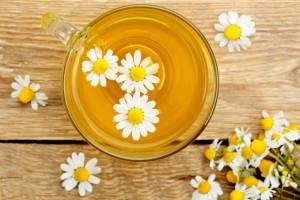 A tablespoon of chamomile flowers insist in a glass of boiling water, add a teaspoon of honey to the infusion. A tablespoon of willow bark boil for half an hour in a glass of water, cool, gargle. Tablespoon of sage boil a few minutes in a glass of water, cool, gargle. two cloves of garlic crushed, pour a glass of boiling water, insist about 40 minutes. 4 fresh plantain leaves or 2 tablespoons dry raw materials brew a glass of boiling water, insist half an hour. Let cool, gargle every half an hour. Compress. Chest treated with coconut oil with the addition of a few drops of eucalyptus. Cover with a piece of gauze, polyethylene, lie for 20 minutes. The procedure is repeated twice a day. Compresses are not done at elevated body temperature. Grind 50 g of propolis, pour it with 250 ml of alcohol, insist in warmth and darkness for 2 weeks. Dishes with tincture are shaken three times a day. Strain, rinse the nose with tincture, pre-fill a teaspoon of tincture with six teaspoons of cold boiled water. Chop a medium sized onion. Pour 50 ml of boiling water, add a tablespoon of honey, mix. Infuse for three hours, strain. Used as drops and for washing the nose. Cut off the lower or middle leaves of aloe older than three years, wash, dry. The cut leaf of the plant should not be kept outdoors for more than three hours. Wrap in a sheet of paper, put in the refrigerator for a week and a half. Then take it out and cut across. The juice is squeezed and instilled every two hours, 6 drops in each nostril. The mucosa will be restored very quickly.
A tablespoon of chamomile flowers insist in a glass of boiling water, add a teaspoon of honey to the infusion. A tablespoon of willow bark boil for half an hour in a glass of water, cool, gargle. Tablespoon of sage boil a few minutes in a glass of water, cool, gargle. two cloves of garlic crushed, pour a glass of boiling water, insist about 40 minutes. 4 fresh plantain leaves or 2 tablespoons dry raw materials brew a glass of boiling water, insist half an hour. Let cool, gargle every half an hour. Compress. Chest treated with coconut oil with the addition of a few drops of eucalyptus. Cover with a piece of gauze, polyethylene, lie for 20 minutes. The procedure is repeated twice a day. Compresses are not done at elevated body temperature. Grind 50 g of propolis, pour it with 250 ml of alcohol, insist in warmth and darkness for 2 weeks. Dishes with tincture are shaken three times a day. Strain, rinse the nose with tincture, pre-fill a teaspoon of tincture with six teaspoons of cold boiled water. Chop a medium sized onion. Pour 50 ml of boiling water, add a tablespoon of honey, mix. Infuse for three hours, strain. Used as drops and for washing the nose. Cut off the lower or middle leaves of aloe older than three years, wash, dry. The cut leaf of the plant should not be kept outdoors for more than three hours. Wrap in a sheet of paper, put in the refrigerator for a week and a half. Then take it out and cut across. The juice is squeezed and instilled every two hours, 6 drops in each nostril. The mucosa will be restored very quickly.  Drip nose three times a day with sea buckthorn oil. The tool has a wound-healing, bactericidal effect, relieves pain, activates blood flow. Buy it or cook it yourself. Ripe berries are washed and dried, juice is squeezed out of them. The cake is dried in natural conditions, without leaving it in the sun. After drying, the berries are ground in a coffee grinder, transferred to a glass jar. Heat the olive oil until it is hot. Cake is poured with oil so that it is three centimeters higher than the level. Insist for a week, stirring every day. Strain, store in a refrigerator in glass.
Drip nose three times a day with sea buckthorn oil. The tool has a wound-healing, bactericidal effect, relieves pain, activates blood flow. Buy it or cook it yourself. Ripe berries are washed and dried, juice is squeezed out of them. The cake is dried in natural conditions, without leaving it in the sun. After drying, the berries are ground in a coffee grinder, transferred to a glass jar. Heat the olive oil until it is hot. Cake is poured with oil so that it is three centimeters higher than the level. Insist for a week, stirring every day. Strain, store in a refrigerator in glass.
Prevention
 Gargle with warm boiled water after the street. Do not talk in the cold for a long time. Do not drink drinks directly from the refrigerator or with ice. Avoid hypothermia, infectious, viral diseases. This will help inhalations, vitamins. If the first signs of diseases of the nasopharynx occur, you should consult a doctor and start medical treatment. Otherwise, the disease will become chronic. Drink one and a half liters of pure water per day. Do not inhale fumes of chemicals that irritate the throat mucosa. In the morning on an empty stomach, drink a glass of water with a spoonful of honey. You can sing loudly and shout a little to strengthen the throat and cleanse the mucosa. Give up smoking.
Gargle with warm boiled water after the street. Do not talk in the cold for a long time. Do not drink drinks directly from the refrigerator or with ice. Avoid hypothermia, infectious, viral diseases. This will help inhalations, vitamins. If the first signs of diseases of the nasopharynx occur, you should consult a doctor and start medical treatment. Otherwise, the disease will become chronic. Drink one and a half liters of pure water per day. Do not inhale fumes of chemicals that irritate the throat mucosa. In the morning on an empty stomach, drink a glass of water with a spoonful of honey. You can sing loudly and shout a little to strengthen the throat and cleanse the mucosa. Give up smoking.
Before using all the above remedies, you need to obtain the permission of a doctor.
